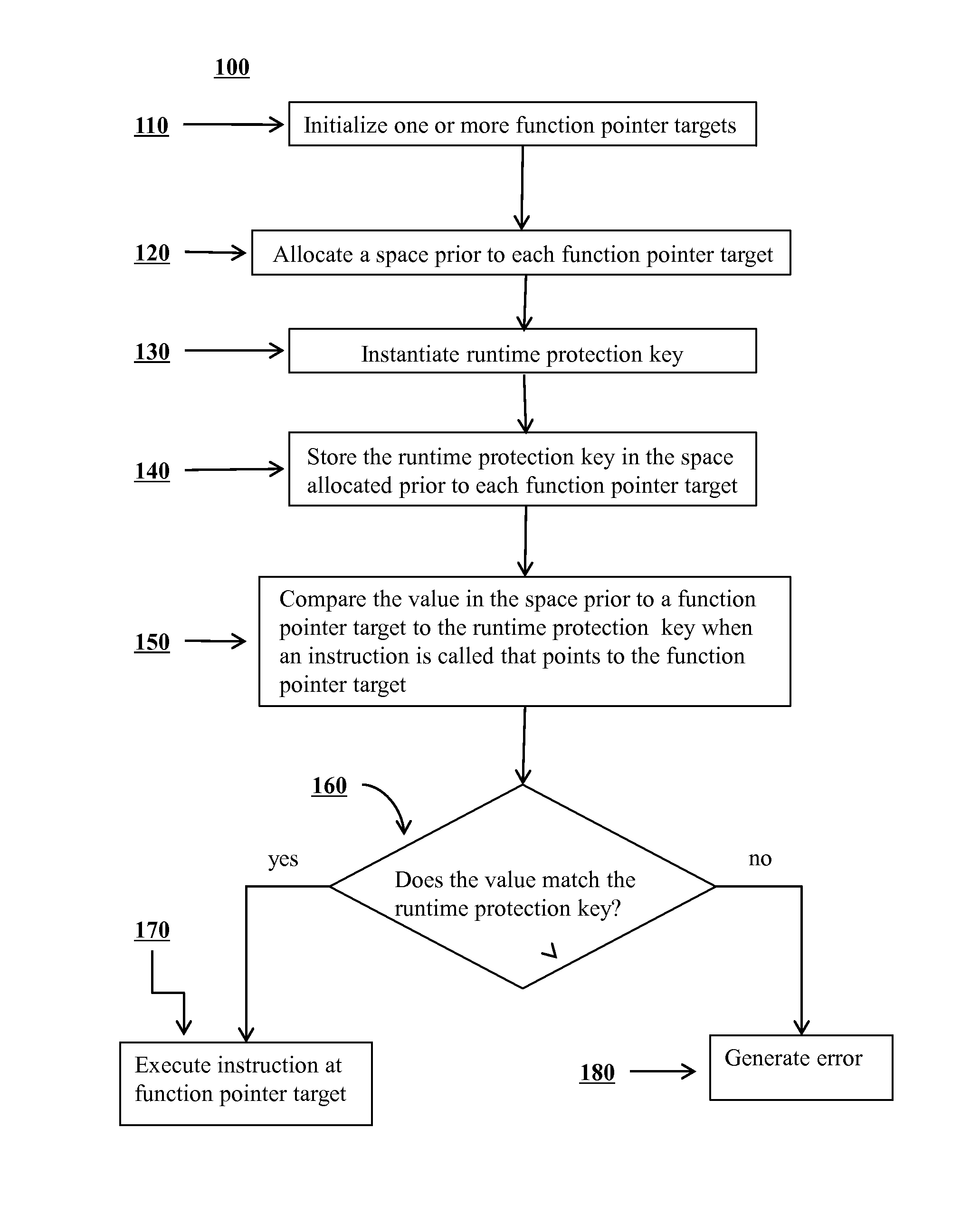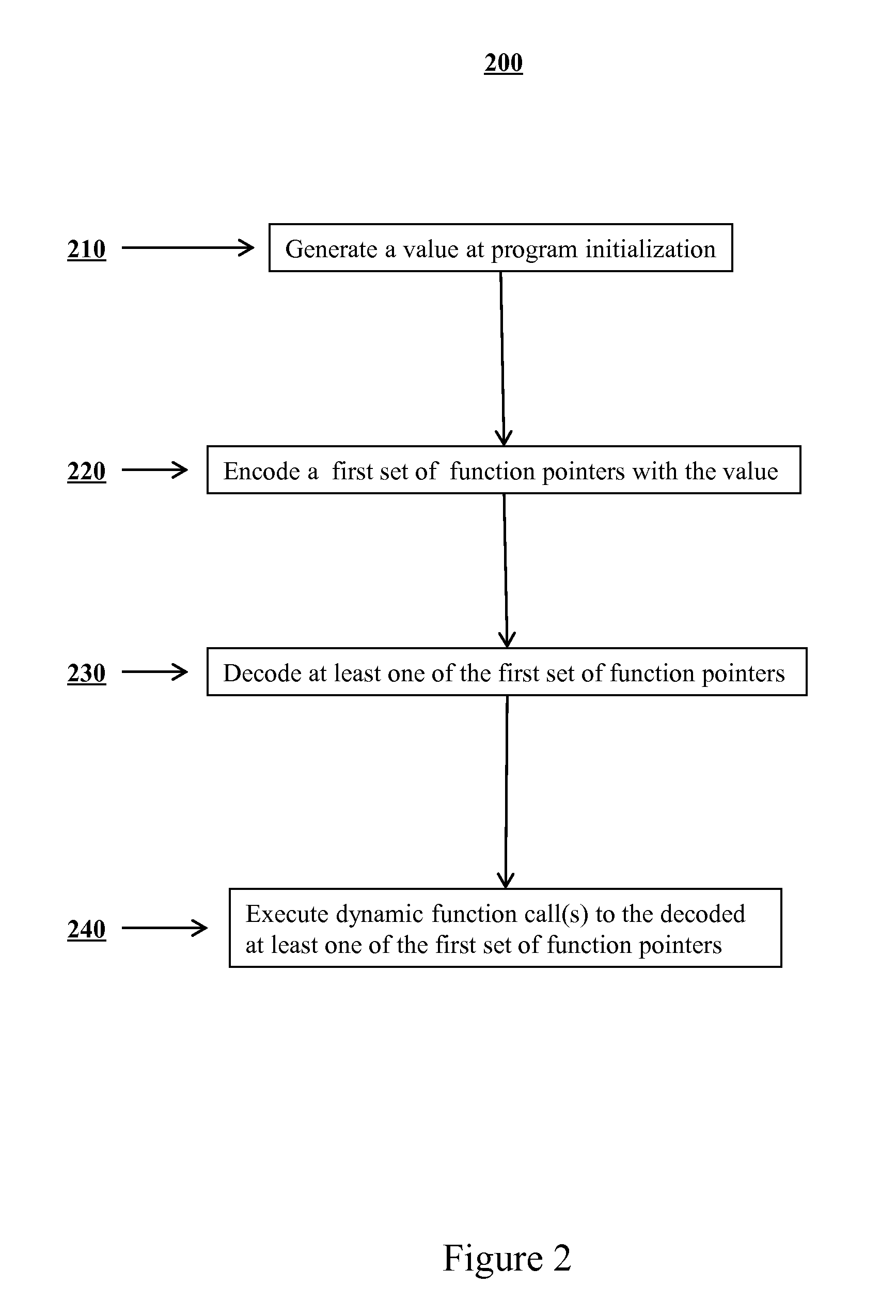Mitigation of function pointer overwrite attacks
a function pointer and overwrite technology, applied in the field of computer program security, can solve the problems of attackers using more complicated and challenging techniques to gain code execution, and achieve the effect of mitigating a function pointer overwrite attack
- Summary
- Abstract
- Description
- Claims
- Application Information
AI Technical Summary
Benefits of technology
Problems solved by technology
Method used
Image
Examples
Embodiment Construction
[0022]Certain embodiments of methods and systems are disclosed for improving security of computer software and preventing potential attackers from gaining control of portions of computer software. In certain embodiments, one or more additional layers of complexity are imposed that a potential attacker would have to circumvent in order to gain execution control over portions of software. In certain embodiments, the potential attacker may be prevented from corrupting function pointers. In certain embodiments, an application may be prevented from calling an attacker corrupted function pointer by introducing various checks around the call point at compile time that check the validity of the destination to which the function pointer points.
[0023]As shown in FIG. 1, a method for mitigating a function pointer overwrite attack on a portion of a computer program 100 may include the steps of selecting one or more function pointer targets 110, allocating a space prior to each function pointer ...
PUM
 Login to View More
Login to View More Abstract
Description
Claims
Application Information
 Login to View More
Login to View More - R&D
- Intellectual Property
- Life Sciences
- Materials
- Tech Scout
- Unparalleled Data Quality
- Higher Quality Content
- 60% Fewer Hallucinations
Browse by: Latest US Patents, China's latest patents, Technical Efficacy Thesaurus, Application Domain, Technology Topic, Popular Technical Reports.
© 2025 PatSnap. All rights reserved.Legal|Privacy policy|Modern Slavery Act Transparency Statement|Sitemap|About US| Contact US: help@patsnap.com



